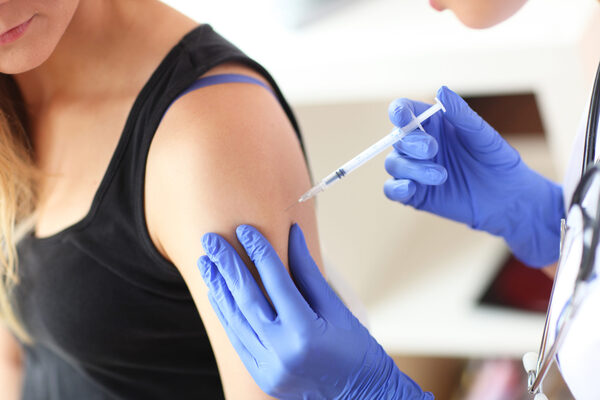
Allergy Shots 101: What to Expect from Immunotherapy
Allergies can be persistent, disruptive, and resistant to over-the-counter solutions. When symptoms interfere with daily life despite medications, many patients explore long-term treatment options—chief among them, allergy shots. Also known as subcutaneous immunotherapy (SCIT), allergy shots are a time-tested solution that addresses the root of allergic responses rather than just treating the symptoms. But what does immunotherapy actually involve, and what should patients expect before committing to the process? This article explains everything you need to know.
What Are Allergy Shots?
Allergy shots are a form of immunotherapy designed to desensitize your immune system to specific allergens. By injecting small, controlled doses of the allergen into your body over time, allergy shots help your immune system become less reactive. Rather than overreacting to harmless triggers—like pollen, dust mites, or pet dander—your body gradually builds up tolerance.
This desensitization process is not immediate. It requires consistent treatment and a long-term approach. However, for many patients, the payoff is fewer symptoms, less reliance on medication, and greater freedom from environmental triggers.
Who Benefits Most from Allergy Shots?
Allergy shots are most commonly prescribed for patients with moderate to severe allergic rhinitis (hay fever), allergic asthma, and certain insect sting allergies. They are particularly helpful for:
People who do not respond well to medications
Individuals who want to reduce or eliminate their dependency on antihistamines and nasal sprays
Children with persistent allergies (to help reduce the risk of asthma development)
Adults with multiple allergies that cannot be easily avoided
Common allergens treated with immunotherapy include:
Tree, grass, and weed pollens
Mold spores
House dust mites
Animal dander (e.g., cats, dogs)
Cockroach allergens
Food allergies and drug sensitivities, however, are not treated with allergy shots.
The Two Phases of Allergy Shot Treatment
Allergy shots are administered in two distinct phases:
1. Buildup Phase
Duration: 3–6 months
Frequency: 1–2 times per week
Goal: Gradually increase the dose of allergen to help the body adapt
During this phase, patients receive increasingly stronger doses of the allergen to build tolerance. Regular appointments and careful monitoring help prevent adverse reactions.
2. Maintenance Phase
Duration: 3–5 years
Frequency: Every 2–4 weeks
Goal: Maintain tolerance with a consistent dose
Most patients begin noticing symptom relief within the first year of treatment, with the greatest benefits becoming apparent by the second year.
What Happens During an Appointment?
Each appointment involves:
Checking in and reviewing recent symptoms
Receiving the injection (usually in the upper arm)
Waiting 30 minutes for observation in case of an allergic reaction
Reactions are rare but possible. The most common are mild swelling or redness at the injection site. More serious reactions—such as hives, wheezing, or anaphylaxis—are very uncommon, and clinics are equipped to manage them immediately.
Expected Benefits of Allergy Shots
The benefits are not just anecdotal—they’re well-documented:
Reduced Allergy Symptoms: Sneezing, nasal congestion, watery eyes, and fatigue often diminish or disappear altogether.
Less Medication: Many patients reduce or eliminate their reliance on antihistamines, decongestants, and corticosteroids.
Improved Asthma Control: In people with allergic asthma, shots can reduce the frequency and severity of asthma attacks.
Long-Term Relief: For many, relief lasts years after completing the full course of treatment.
Preventative Value: Children receiving immunotherapy may be less likely to develop asthma or new allergies later.
What Are the Risks and Drawbacks?
While allergy shots are generally safe, they do come with considerations:
Time Commitment: Frequent appointments can be inconvenient, especially in the buildup phase.
Mild Side Effects: Redness, swelling, or itching at the injection site is common.
Cost: Insurance often covers most of the expense, but copays and time off work may be factors.
Rare Systemic Reactions: Though rare, serious allergic reactions are possible and require immediate care.
These risks are why it’s essential to only receive shots in a medically supervised setting with trained staff on hand.
How Long Until You See Results?
While some improvement may be seen as early as 3–6 months into the buildup phase, most patients don’t experience significant relief until they’ve entered the maintenance phase. By year two, the majority of patients report a marked improvement in symptoms. Some may even choose to discontinue therapy by year three if their allergist determines it’s safe to do so.
Is Immunotherapy Right for You?
Allergy shots are a commitment, but they’re one of the few treatments that actually change how your immune system reacts to allergens. For people dealing with persistent allergies that affect quality of life, sleep, and productivity, immunotherapy offers a scientifically backed path to long-term relief.
Candidates for allergy shots typically:
Have confirmed environmental allergies through skin or blood testing
Are between ages 5 and 65 (though some patients fall outside this range)
Have time and ability to commit to regular appointments
Want a treatment that goes beyond symptom management
If that describes you, it’s worth speaking to an allergist about starting therapy.
Final Thoughts
Allergy shots are more than just injections—they’re a long-term investment in your health and well-being. They retrain your immune system from the inside out, giving you control over allergies rather than letting symptoms dictate your life. While the process takes time and discipline, the benefits—reduced symptoms, fewer medications, and lasting relief—make immunotherapy one of the most effective allergy treatments available today.
